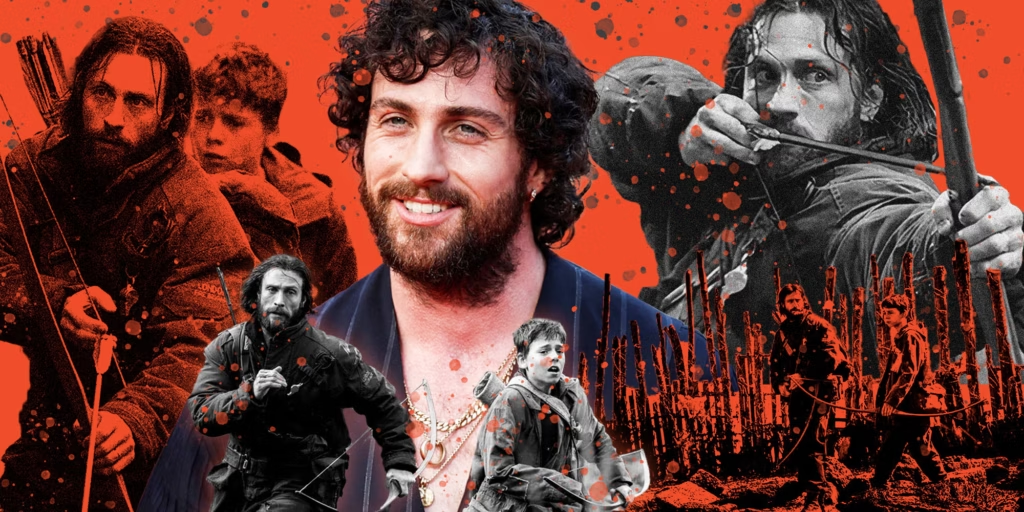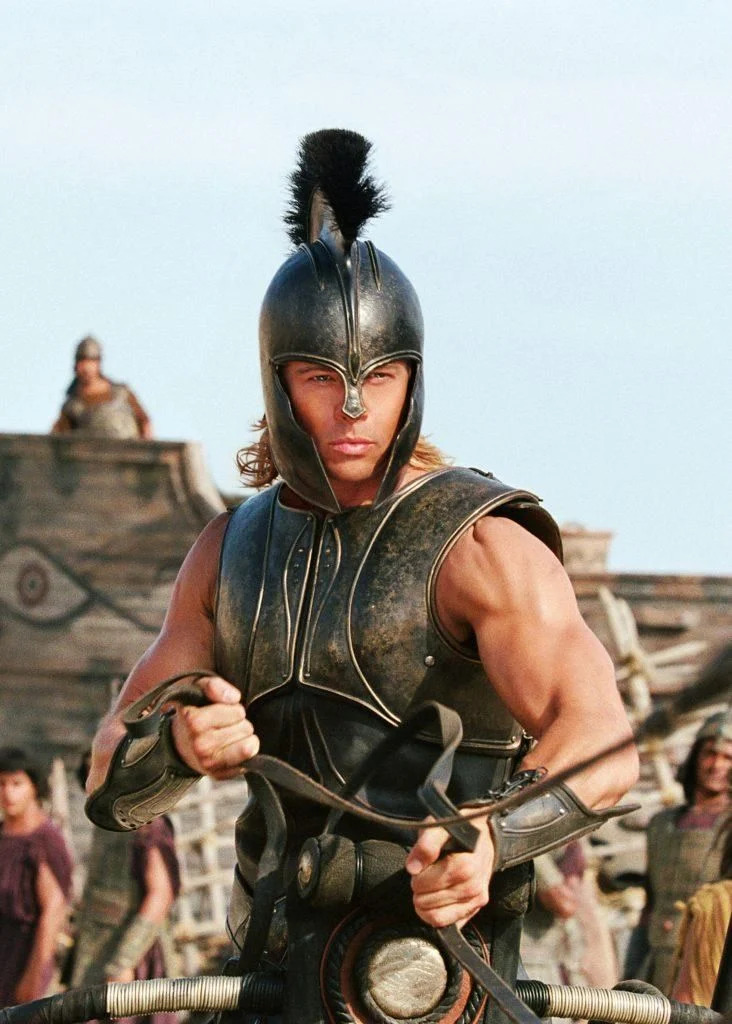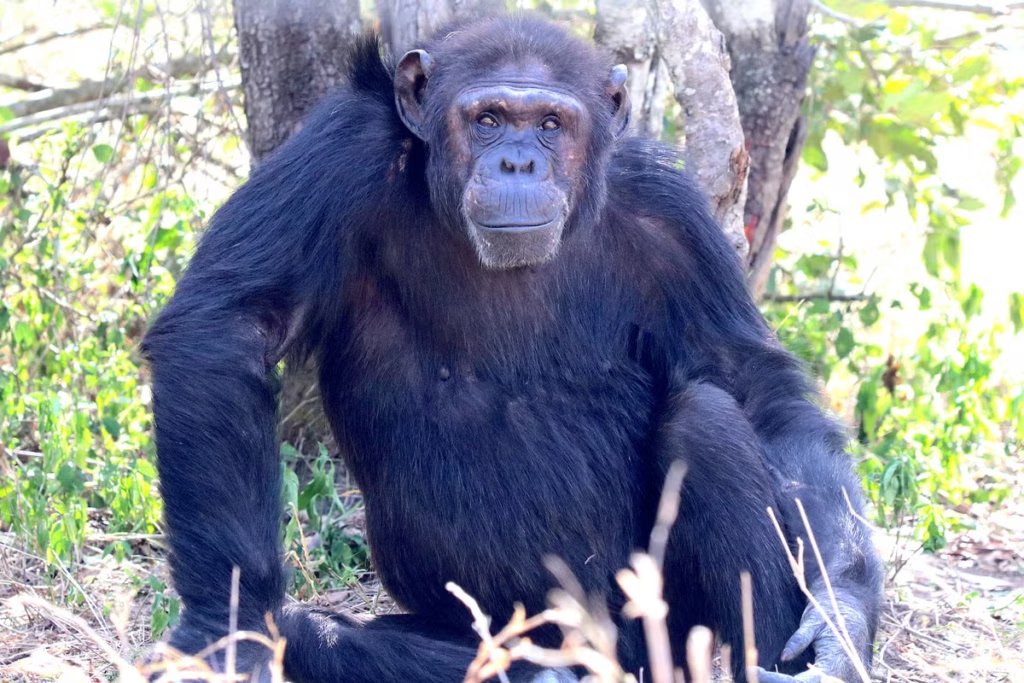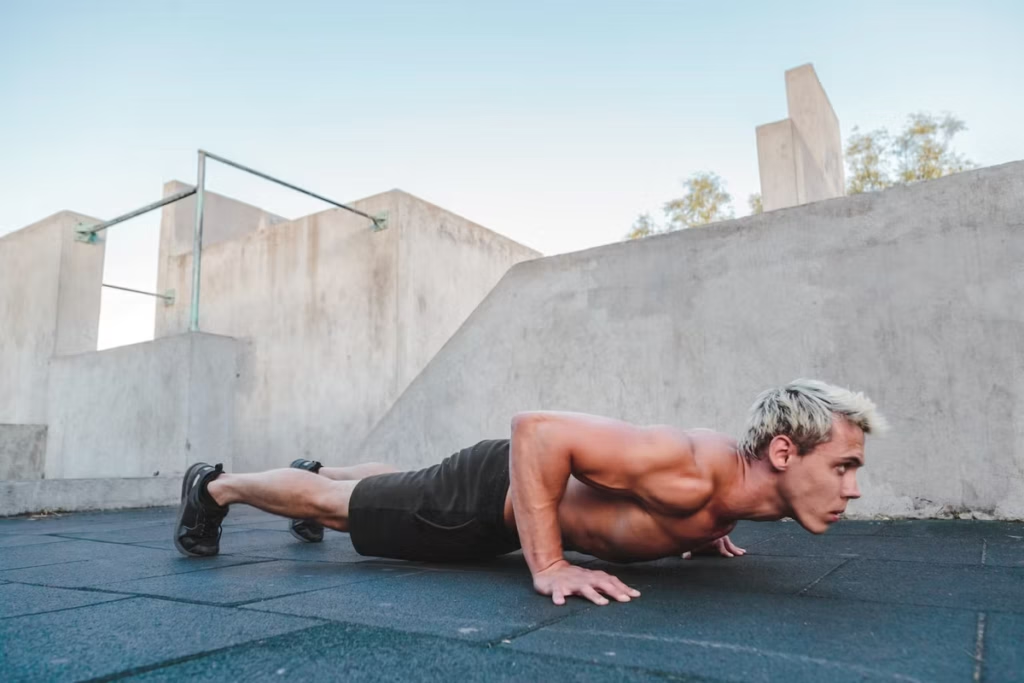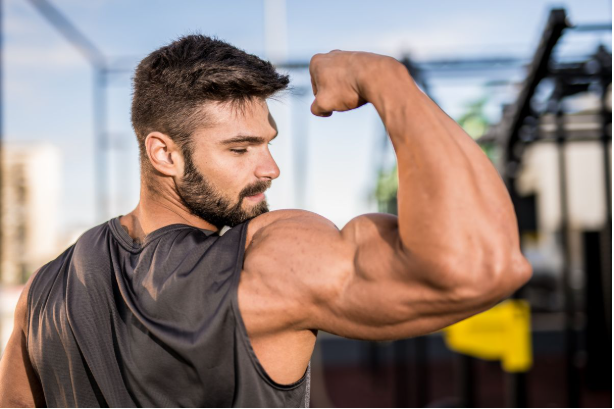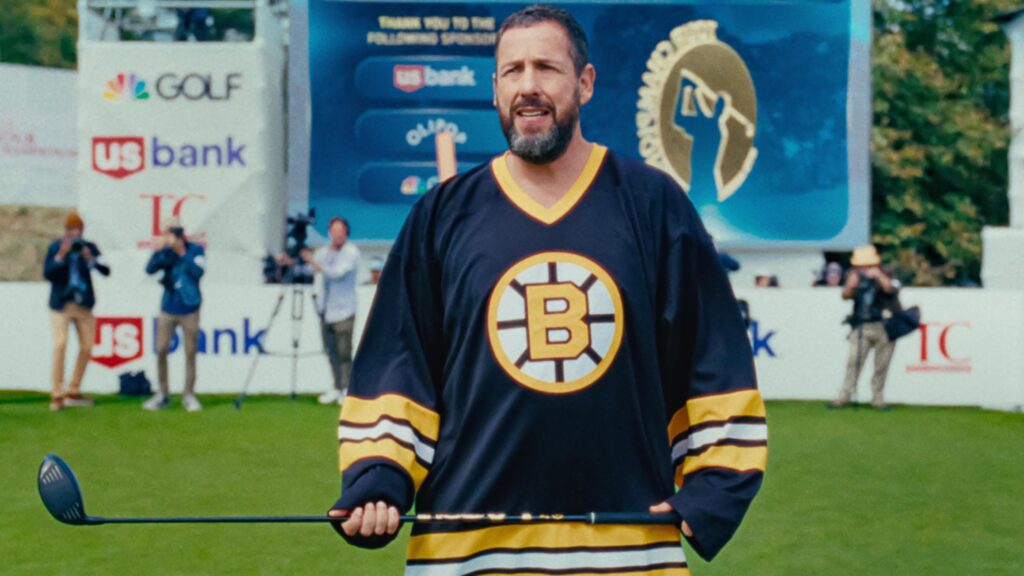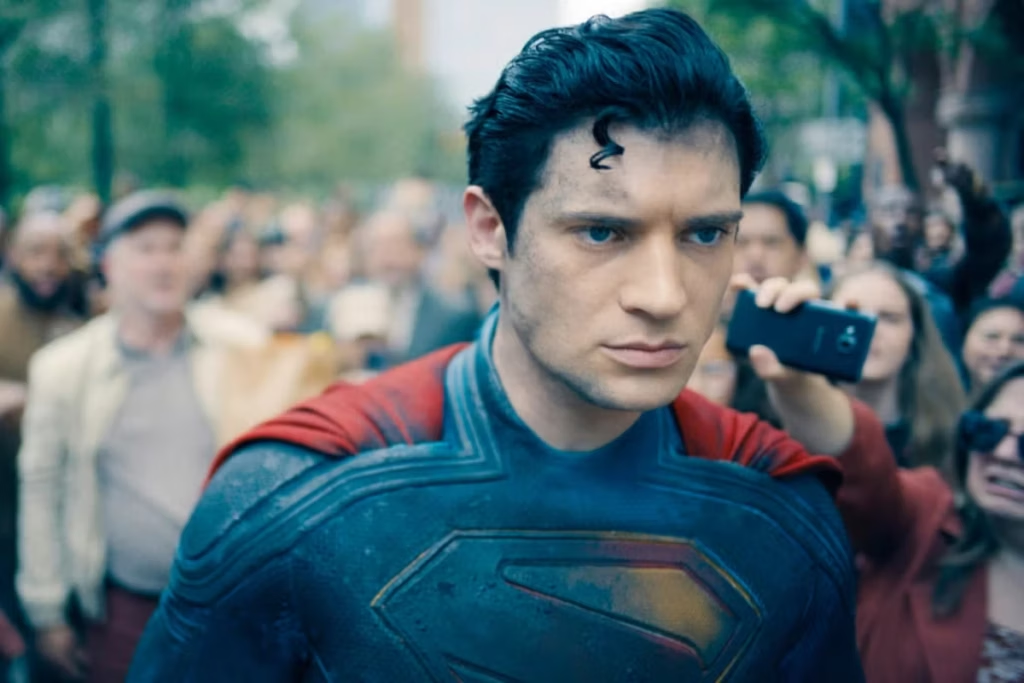The following story contains spoilers for Sony Pictures Entertainment’s Bullet Train.
The fight scenes in David Leitch’s nonstop action comedy Bullet Train are an absurd-yet-elegant dance between actors and their environment. Brad Pitt has to escape Aaron Taylor-Johnson’s seatbelt strangulation, Bad Bunny’s fate is sealed by a knife ricocheting off a briefcase, and Brian Tyree Henry has a bloody tussle with Pitt without violating the volume limits of the titular Bullet Train’s quiet car. The film’s stunt coordinator/second unit director, Greg Remente, made it all look real with guidance from Leitch, himself a stuntman-turned-director.
“David strives to have the cast do their own fighting. It’s better to see your actor in the moment. You believe you’re on the journey. You don’t cut away to these big stunts,” Remente told Men’s Health.
To achieve this, the stunt savant from Black Panther, The Fate of the Furious, The Walking Dead, and a decade’s worth of other film credits put the star-studded cast through a boot camp on and off the set. Bad Bunny came in with little to no prep time; by the end, he was wielding a knife like a trained assassin. Remente threw everything he could at Pitt, and the veteran actor—who is said to have done 99% of his own stunts—proved why he’s one of the most versatile thespians of the 21st century. Leitch, who once served as Pitt’s stunt double in Fight Club, helped Remente understand what Pitt could and couldn’t do (hint: he could do everything).

Whether it was testing out all the ways the TUMI 19 Degrees aluminum briefcase could inflict pain and protect Pitt or riding trains to visualise how to have maximum stunt potential in a confined space, Remente spared no expense when it came to bringing the wild Bullet Train stunts to life.
Men’s Health: These fight scenes are delightfully intricate. The train and the briefcase play integral parts in the action. How did you and David come up with the fight choreography?
It all starts with the character in the fight. Once we have a character, we design a style around them based on what they do, who they are and what their mission is. Ladybug, for example, is kind of on the tail end of his career and doesn’t want to fight. He wants to get in, snatch the TUMI briefcase, and then get out. That means he’s more defensive, so we made his character be slightly off guard and on guard at the same time while being defensive. The best part about it is every character had that journey. That’s the first layer.
Then, the next layer is you work with someone like Brad, see his strengths, and build around that. I’m not going to make Ladybug do a technique that doesn’t help the story move forward, and Brad can’t do. Then, we talk about the ambiance and the atmosphere—what is he holding, where is he, and what is he doing? Obviously, he’s got a briefcase, and he’s on a train. How do you keep the train fresh? And then it just dog piles on top of each other. But, the most important thing is focusing on the narrative, the story, and the characters. And if you trust in that, it will always steer you in the right direction.
How did you figure out what Brad can and can’t do? What specific moves can you point to that show what he can do?
Figuring out what he can do was easy for us because he has a body of work that shows his talent. I spent a lot of time researching all of his films. David was his stunt double in the past, so I had the inside scoop. Then, we’ll do training sessions with our cast, going through a vocabulary and various basic-to-intricate techniques as if we’re teaching. But we are also evaluating how we can take their strengths and build them into their character. So we’ll do workshops for movement, your body, your punches, your kicks, your knees, your twisting, your jumping, your squatting. We’ll see strengths that we know will help us excel.
Brad has what I call stunt hair. When you have long hair, your head reactions and everything you do are heightened. Since he’s doing a lot of movement and defending, we’ll do more of the action [above his neck], because then you get to keep the camera on the money maker, which is Brad Pitt. You can see his grey hair flying around the place. Brad is great. He’s very physical, an athlete, and understands acting in action. So, that was great and helpful. He understands big movements and twisting. It’s hard to say what he could or couldn’t do, because there really wasn’t anything he couldn’t do. We threw a lot of different things at him, but he was prepared.
How long was the training? What does it look like to train for the stunts and physicality of a movie like Bullet Train?
We had a space where we would train with Brad and our cast. We would train about two days a week for one to two hours each day. We’d do general stunt vocabulary, and two to three combination moves that we feel might be something we’ll do. We train it on both sides with a focus on hidden strengthening. We want the cast to learn how to do the moves and have fun because that’ll let them be stronger as their character. We do specific moves repeatedly as drills to strengthen certain body parts.
For example, we’ll do things like putting your feet double shoulder width apart, bending your knees, putting your hands up, and twisting side to side. So, now we’re working legs, hips, core, and balance. We’ll do four to five sets of 10 of those. Then, we’ll switch it to uppercuts. Then we’ll switch it to leg-dropping elbows as we’re twisting. The focus is on turning the hips because when you sell a convincing movie punch, you need to start back, go all the way forward, and then come back. But, we hide it in the training exercises. Before they know it, their core, legs, and punches are stronger. They’re doing the choreography they need to do.
The thing we strengthen a lot that people underestimate is your neck. We would do a lot of warming up and loosening up of the neck because you’re spending all day taking head reactions that you are doing where nobody’s actually hitting you. There are also a lot of high knees because we’re going to be engaging glutes. There are hip flexors for kicking, the knees, running, throwing, and falling. I also love a good jumping jack, a good burpee, and a good pushup.

Brad had an extensive filmography you could look at to figure out what he could do. Bad Bunny didn’t. So how did you figure out what he could do?
The amazing thing about Bad Bunny was that he came to us with not as much prep time but knew what he was up against. He was hungry and humble and came to us every day for almost a week for a couple of hours and grinded it out with us in our stunt workshop space. We knew he would use a knife and fight against a guy with a briefcase. He would be on the attack.
So, we wasted no time getting him in there, getting through the basics, and seeing his strengths. How many ways can you strike with a knife? I could probably tell you more than most people need to know. We would have him workshop those moves. In about 20 minutes of training, we would immediately see he’s strong, and then we would gather around and go tomorrow. Then, instead of 50 moves, we’d focus on these three and use those. So, the same drill I showed him where I go side to side, I’d now put a knife in his hand and then do this 50 times. Before he knows it, he doesn’t realise he’s striking. Then, all of a sudden, he’s aggressive, yelling, and the next thing you know, he is acting.
I’m not going to lie; I didn’t know what he could do. And that can be a gamble. Thankfully, he’s a badass. He showed up, started moving, and we were like, “Oh, this is going to turn out to be great.” I think he’s got a big career in action.
Bad Bunny’s death in the movie was a shocker. How did you guys figure out that he would die with a knife bouncing off the briefcase and piercing his heart?
That was a combination of two options of some stunt vis, which is like a pre-visualisation, that the stunt team and I delivered to David. First, we had options where his Wolf necklace would get caught on the TV, come down, fall on his head and break his neck. We had options where birds would fly through the window and peck him to death. But his story is about his heart because the love of his life died. So, we should stab him in his heart.
This thing he had been given, this knife, was valuable to him. So, why not use it to pierce the thing that he loves the most? Second is Brad’s briefcase and bad luck that we tried to play into. Maybe we’re just crazy people, but falling backward and breaking your neck over the briefcase was just something that we thought of that would visually seal the deal in a really shocking moment.
The briefcase is not only central to the film but to that fight. How early in your development of the fight choreography did you factor in the briefcase?
That was one of the things we knew out of the gate. You would be surprised to know the number of things we discovered you could do with a briefcase. You can skate on it as you’re pulled by a rope from a speeding bullet train. You could launch off ramps. We tested tons of things that you could do that Brad could do. You can throw it in the air and catch it as a knife goes through the handle. You can flip it up and hit a guy in the chin. You can open, close, smack, and use it behind your head. You can do tons of things with it. So we devised a vocabulary of A, B, C, and D techniques. A-techniques were the ones that were our bread and butter—the block, the turn, the hit, the strike.
So I loved having that briefcase because you knew everybody was after it, so it’s a character of its own. That’s what I really love about working with David. There are opportunities to make characters that aren’t people. First and foremost, we put pads everywhere. We paint them to look like the set. As far as most people know, you’re looking at a marble concrete countertop. That was a pad. VFX sometimes paints it to make it look better. You also got rubber knives. We’ve got half knives; VFX adds the knife later. I’m constantly in the ear of everybody, making sure that they are safe and that everybody feels safe.

There’s a lot of levity in these action scenes, especially in Brad Pitt’s fight with Brian Tyree Henry in the quiet car of the bullet train. Any funny moments on set you can remember?
I do remember when Brad fights The Hornet, played by Zazie Beetz. A lot of that was riffing. On the day of shooting, she just kept calling Brad bitch [LAUGHS]. The next thing you know, David was leaning into it. David said, “Keep going with it, keep calling him bitch.” And then she started digging into him, and everybody had a good time. I think Brian Tyree Henry and [Taylor-Johnson] had an absolute blast. Most of their script was those two just riffing and having fun in the fight.
My favorite fight was between Lemon and Ladybug sitting in their seats in the Quiet Room. As you said, the train was a character of its own. How did you use the confines of a train to make such intense action sequences?
The main character of that fight was the quiet car. Walking through that process was really funny because the one thing you do when you fight is make noise. You scream, and you yell. That’s what brings the energy up, whether they ADR it later or not.
So how do you keep it quiet and hide in plain sight because they didn’t want to be seen fighting? One of the things we did was come up with a bunch of really uncomfortable positions that Brad and Brian’s characters might be in when they were caught. That’s why when he was choking, they quickly put their arms around each other as if they were just being buddies sitting on each other’s lap.
What about Zazie’s physicality did you lean into for her fight with Brad? It’s pretty short but memorable.
With Zazie vs. Brad, we saw that as essentially the two top tacticians in the world. Brad is in retirement, but he’s still the best. And Zazie has been the top, most unattainable assassin in the world. She’s been killing everybody. We called it “Judo Chess.” It was a game of chess. We wanted it to be tight. We wanted it to be consolidated. We wanted it to be right to the point. It was almost like The Good, The Bad, and The Ugly meets judo assassins. They had a standoff, and we wanted to get to that because it was the culmination.
We’ve seen a lot of fights. We’ve seen a lot of very character-driven fights. But, at this point, she’s got her thing to say, he’s got his thing to say, she pulls out the needle, and then it’s just tension, tension, tension, comedy, comedy. It’s also dependent on how much time we have with certain actors. We had a lot of time with Brad. We had a lot of time with Brian. We had a lot of time with Aaron. We had a good amount of time with Bad Bunny. We had a very short amount of time with Zazie. She’s another perfect example of someone who had it. She had the skill. She is very talented. What she had to do was quite difficult in the amount of time that we had with her. I would love to see a sequel spinoff of her character because I think she could handle a lot more. She’s badass.
This interview has been condensed for content and clarity. Via Men’s Health.








